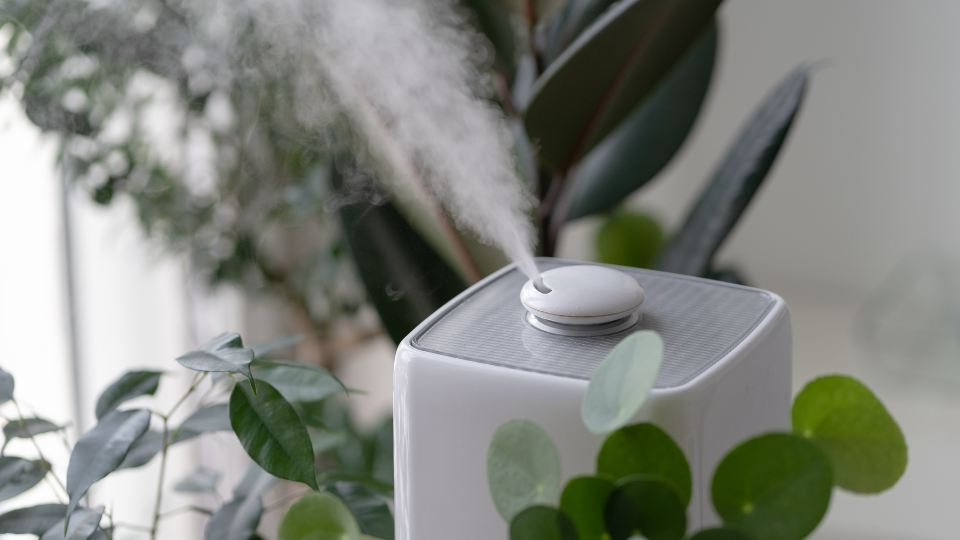Plants need water, light, and nutrients to thrive, but humidity is often overlooked as a crucial factor in their well-being. For many plants, especially tropical ones, humidity is essential for proper growth, hydration, and general health. Let’s explore why humidity is important for plants and how you can create the right environment for them to thrive.
Understanding Humidity and Its Role in Plant Health
Humidity refers to the amount of water vapor in the air. Plants release water from their leaves in a process called transpiration, which helps regulate their temperature, deliver nutrients, and support photosynthesis. When the air is too dry, plants may lose water too quickly, leading to dehydration and stress. On the other hand, adequate humidity levels allow plants to retain moisture, promoting a healthy balance for growth.
For most plants, a humidity level between 40-60% is ideal. Tropical plants, however, often prefer levels of 60% or higher, as these mimic their natural environment. Higher humidity helps tropical plants stay hydrated and supports lush, vibrant foliage.
Key Benefits of Humidity for Plants
1. Prevents Dehydration: Humidity helps prevent plants from losing water too quickly through their leaves. In dry conditions, water loss increases, which can leave plants dehydrated and stressed. Adequate humidity reduces the risk of this moisture loss, helping plants stay hydrated for longer.
2. Supports Growth and Nutrient Absorption: Water is crucial for plants to absorb nutrients from the soil. Humidity plays a role here by ensuring that water taken up by the roots moves efficiently to other parts of the plant. When humidity is balanced, plants are better equipped to grow, flower, and produce healthy foliage.
3. Enhances Photosynthesis: Photosynthesis, the process by which plants convert sunlight into energy, depends on water. High humidity helps maintain the moisture needed for photosynthesis, keeping plants energized and growing. When humidity levels are too low, photosynthesis can slow down, impacting the plant’s ability to produce new growth.
4. Reduces Stress: Low humidity can put plants in a constant state of stress, making them more vulnerable to pests, diseases, and other environmental challenges. By providing a humid environment, you reduce stress and support the plant’s natural resilience, which contributes to overall health.
5. Encourages Leaf Health and Appearance: Humidity is especially important for tropical and moisture-loving plants like ferns, palms, and calatheas. These plants tend to have broad, thin leaves that are more susceptible to drying out. Higher humidity helps keep leaves lush, soft, and vibrant, giving them the full, healthy look that plant enthusiasts love.
Signs Your Plants Need More Humidity
If you’re noticing certain signs in your plants, it could be an indication that the air is too dry. Look for these symptoms:
- Brown, crispy leaf edges: One of the most common signs of low humidity is brown or crispy edges on leaves. This can be particularly noticeable on tropical plants.
- Drooping or wilting: If your plant is wilting despite adequate watering, it might be struggling with low humidity. When the air is dry, water evaporates more quickly, leading to drooping.
- Leaf drop: Some plants respond to low humidity by dropping their leaves as a survival mechanism. If you’re seeing leaves fall off frequently, it might be time to increase the humidity around your plant.
- Slow growth: Dry air can stunt growth in certain plants, especially tropical varieties. If a plant that usually grows quickly seems to have stalled, humidity could be the missing ingredient.
How to Increase Humidity for Your Plants
There are several ways to boost humidity levels, especially if you live in a dry climate or are growing tropical plants indoors:
1. Use a Humidifier: A small humidifier near your plants is one of the easiest ways to maintain consistent humidity. Set it to the desired level and let it run for a few hours a day, especially in winter when indoor air tends to be drier.
2. Mist Your Plants: Lightly misting your plants with water can temporarily increase humidity around the leaves. Be mindful not to oversaturate, as excess moisture on leaves can sometimes encourage fungal growth. We love this continuous spray bottle!
3. Group Plants Together: Placing plants close to each other can create a small microclimate. As each plant releases moisture, it raises the humidity around the group, benefiting all of them.
4. Set Up Humidity Trays: Place a tray filled with water and pebbles underneath your plant pots. As the water evaporates, it will create a humid environment around the plants. Just be sure the pots are not sitting directly in the water, which can lead to root rot.
5. Consider a terrarium or greenhouse: For plants that need very high humidity, such as ferns or mosses, a terrarium can be a perfect solution. By enclosing the plants, a terrarium maintains humidity levels much more effectively than open air. The IKEA glassdoor cabinets are great and look good too.
Which Plants Need High Humidity?
While all plants benefit from some humidity, certain types require higher levels to thrive. These include:
- Tropical Plants: Monstera, philodendrons, pothos, and other rainforest natives need high humidity to support their lush, expansive leaves.
- Ferns: Ferns like Boston fern, maidenhair fern, and bird’s nest fern are known for their humidity needs and will reward you with beautiful, soft fronds when kept in a moist environment.
- Orchids: Orchids naturally grow in high-humidity environments, and they’ll bloom best when humidity levels are kept around 60-70%.
- Calathea and Maranta: Known for their beautiful leaf patterns, these plants are prone to leaf curling and browning if the humidity drops too low.

Creating the Right Environment for Your Plants
Humidity is an often overlooked but vital component of plant care, particularly for indoor and tropical plants. By paying attention to humidity levels, you’re creating a more natural and supportive environment that helps plants thrive. Whether it’s adding a humidifier, grouping plants, or setting up humidity trays, these small adjustments can make a big difference in the health and appearance of your plants.




